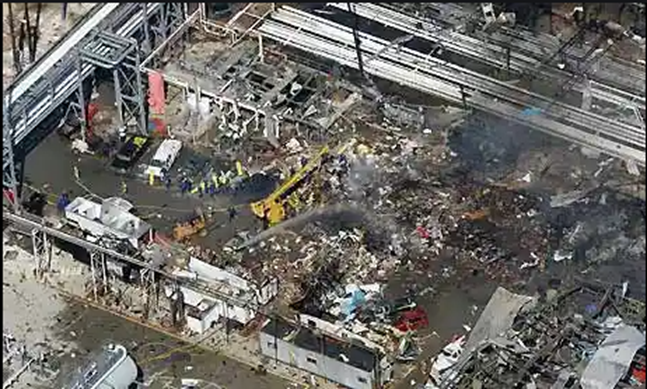The Weekly Reflektion 31/2021
What is the worst Major Accident we have come across? What criteria should we use to judge the many Major Accidents that we have studied? The consequences in the terms of loss of life, impact on the environment or financial loss? In our view it is more appropriate to judge based on the failure of the systems in place to prevent a Major Accident.

What was the culture at the Texas City refinery before the explosion in 2005?
The Texas City Refinery explosion in 2005 is one of the worst Major Accidents that we have studied. The explosion occurred when a distillation column used to produce high octane fuel was filled with liquid due to a closed outlet valve. The overfilling caused pressure relief valves to open, and the contents of the column filled a blowdown drum with hot hydrocarbons. This drum then overflowed, and a geyser of hot liquid spouted from the open vent on the drum. The resulting vapour cloud was ignited by a diesel pick-up truck that was parked nearby and still running. The explosion killed 15 people and injured 170.
Eva Rowe lost both her mother and her father in the Texas City refinery explosion. As part of her settlement with BP Amoco she required that key information presented at the court case be made public. This information provides a unique insight into the culture at the refinery including why signals were not acted upon and inherent safety principles not adhered to. The Chemical Safety Board (CSB) that investigated the explosion recommended that BP Amoco commission an independent panel to investigate the safety culture at the refinery. The panel was led by former U.S. Secretary of State James Baker.
The Baker panel report concluded that there was a weak safety culture, and that BP Amoco did not follow US Department of Energy published safety recommendations. The combination of cost-cutting, production pressures and failure to invest had compromised safety significantly.
In 2002 BP Amoco commissioned a series of audits and studies that indicated serious safety problems at the refinery including tolerance of non-compliance with basic HSE rules. The BP Amoco management did not take action to address these problems. In 2004, BP Amoco executives announced a challenge to cut costs by 25% at all refineries. While the executives stated that reduction in costs should not compromise safety it was clearly understood in the Texas City organisation that a failure to reduce costs was not playing the game and would not be acceptable.
One of the key performance indicators used to assess safety performance in BP Amoco was the recordable injury frequency rate. Investments had been made to improve personal safety such as slips, trips, falls and vehicle accidents. In 2004 Texas City refinery achieved its lowest recordable injury rate.
During the period June 1998 to March 2005 there were six different Business Unit Leaders at the refinery. None of them stayed longer than 18 months and one was in the job only 4 months.
The Texas City culture was characterised by cost reduction, acceptance of deviations and disregard for inherent safety. There was no continuity in the senior management and success was gauged by achieving budgets. Inappropriate indicators were used to monitor the prevention of a major accident. We would encourage all our readers to learn more about the Texas City refinery disaster in 2005. Unfortunately, there is a lot to learn.
